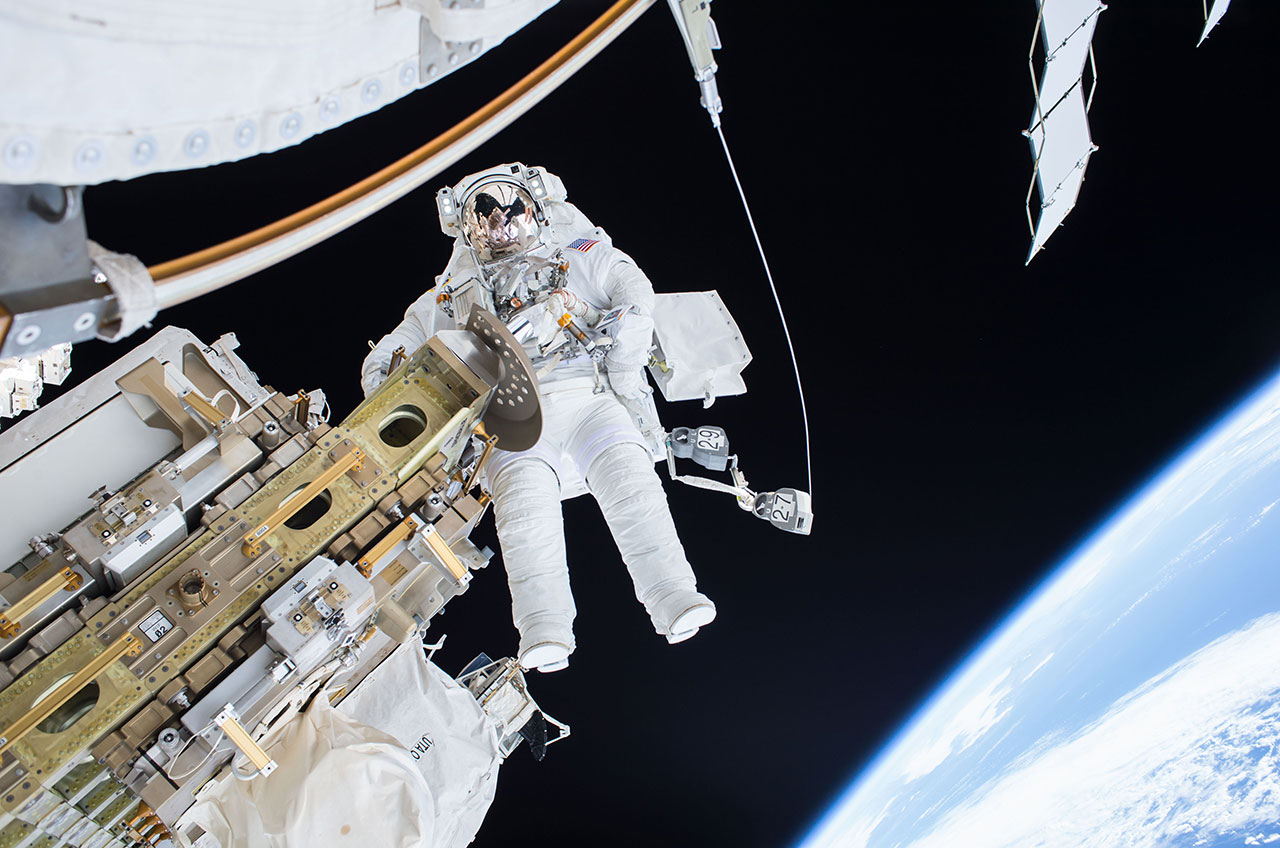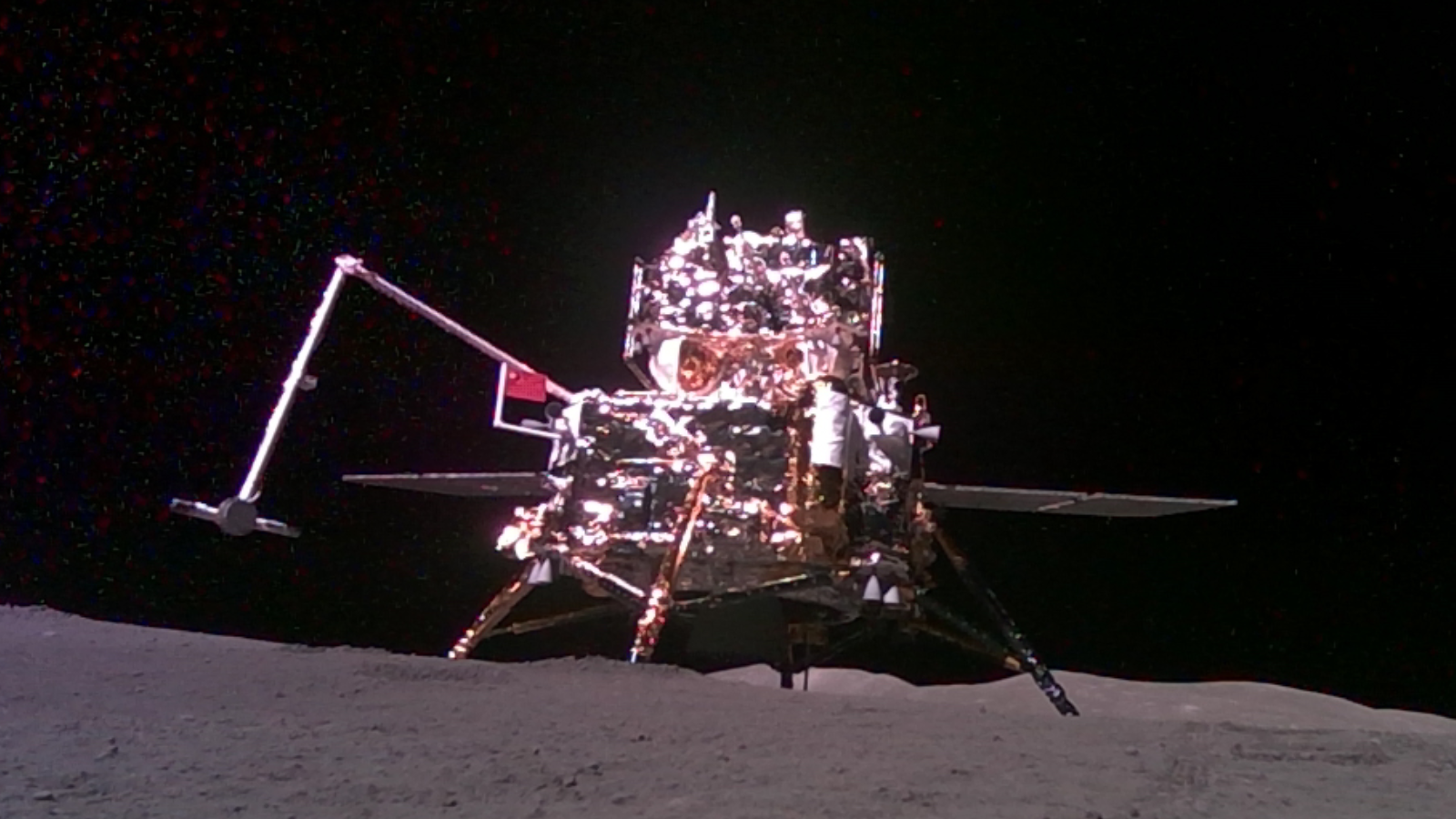More than 12,000 apply to become an astronaut for NASA's 'Artemis Generation'
Wanted: moon travelers.

The results are in and, no surprise, a lot of people want to be a NASA astronaut.
More than 12,000 people have applied to join what NASA is calling the "Artemis Generation," a new class of astronauts to help the agency return humans to the moon and reach outward to Mars. It's the second highest number of applications the agency's astronaut corps has ever received, NASA officials said.
"We've entered a bold new era of space exploration with the Artemis program, and we are thrilled to see so many incredible Americans apply to join us," NASA Administrator Jim Bridenstine said in a statement today (April 1). "The next class of Artemis Generation astronauts will help us explore more of the moon than ever before and lead us to the Red Planet."
Related: What it's like to become a NASA astronaut: 10 surprising facts
When NASA put out the call for a new astronaut class in February, anticipation was already high. After decades flying in low Earth orbit, NASA is again shooting for the moon with its Artemis program, which aims to land the first woman and next man on the moon by 2024. The agency hopes to continue on to Mars in the 2030s.
NASA began taking applications on March 2 and stopped on Tuesday (March 31). The space agency received applications from all 50 states, the District of Columbia and four U.S. territories. The sheer number of applications is second only to the record 18,300 applications NASA received in 2016 for its most recent astronaut class (which graduated in January).
"For this round of applications, NASA increased the education requirement for applicants from a bachelor's degree to a master's degree in a science, technology, math, or engineering field," NASA officials said in the statement. "In addition, the application period was shortened from two months to one."
Get the Space.com Newsletter
Breaking space news, the latest updates on rocket launches, skywatching events and more!
Now comes the hard part: winnowing down the massive applicant pool to just a handful of candidates with the "Right Stuff" to fly in space.
"We're able to build such a strong astronaut corps at NASA because we have such a strong pool of applicants to choose from," said Anne Roemer, NASA's manager of the Astronaut Selection Board and director of human resources at the Johnson Space Center in Houston. "It's always amazing to see the diversity of education, experience and skills that are represented in our applicants."
NASA is expected to announce its final selections for the new astronaut class in mid-2021. Once selected, the astronaut candidates will spend the next 2.5 years training for spaceflight and will then have to wait to be selected for a space crew. That timeline would likely mean they may not fly until after 2024, NASA's current target for a moon return.
But the new astronauts are sure to train to fly on NASA's new Orion spacecraft and Space Launch System megarocket (the centerpiece for NASA's Artemis missions), as well as for missions to the International Space Station on private spacecraft like SpaceX's Crew Dragon and Boeing's Starliner capsule.
NASA currently has 48 active astronauts and has trained 350 astronauts since the agency began training space travelers in the 1960s.
- How to become an astronaut
- Before they go to space, astronauts go to geology camp
- NASA graduates new class of astronauts to join Artemis-era missions
Email Tariq Malik at tmalik@space.com or follow him @tariqjmalik. Follow us @Spacedotcom, Facebook and Instagram.
OFFER: Save at least 56% with our latest magazine deal!
All About Space magazine takes you on an awe-inspiring journey through our solar system and beyond, from the amazing technology and spacecraft that enables humanity to venture into orbit, to the complexities of space science.
Join our Space Forums to keep talking space on the latest missions, night sky and more! And if you have a news tip, correction or comment, let us know at: community@space.com.

Tariq is the Editor-in-Chief of Space.com and joined the team in 2001, first as an intern and staff writer, and later as an editor. He covers human spaceflight, exploration and space science, as well as skywatching and entertainment. He became Space.com's Managing Editor in 2009 and Editor-in-Chief in 2019. Before joining Space.com, Tariq was a staff reporter for The Los Angeles Times covering education and city beats in La Habra, Fullerton and Huntington Beach. In October 2022, Tariq received the Harry Kolcum Award for excellence in space reporting from the National Space Club Florida Committee. He is also an Eagle Scout (yes, he has the Space Exploration merit badge) and went to Space Camp four times as a kid and a fifth time as an adult. He has journalism degrees from the University of Southern California and New York University. You can find Tariq at Space.com and as the co-host to the This Week In Space podcast with space historian Rod Pyle on the TWiT network. To see his latest project, you can follow Tariq on Twitter @tariqjmalik.
-
Truthseeker007 It's no doubt that depending on any government agency is delusional and a vast mistake. The government is very good at killing people that is about it. We have no problems when it comes to taken out other countries with the war machine and killing our own people with the Medical Mafia with the government revolving door. Hey but when the veterans come home from the wars the government sure isn't there to help them. They will drug them up though that's about it.Reply -
kristi276 They say that consciousness lags behind the material conditions of society. We even of the twenty-first century still live in an earlier epoch, and have a comfort zone of not being a space fairing society; for in every respect we are not. Our day to day reality is Earth based, with a few people (astronauts) going beyond our earthly domain. Artemis will succeed in landing some more who will once again go to the moon and gather rocks, but are we really prepared to stay there for the long haul? Are we really prepared to have people live there permanently, like having one million people live on the moon? Having city on Luna with research institutes, libraries, museums, restaurants, movie house, hotels/motels and Holiday Inns? The largest employers may be aerospace, but you have to have the infrastructure in order to support the city; the utilities of any modern metropolis. This takes years of planning and knowing who is going to build what. There may be water ice on the moon, but how do you get it in the supply chain where it is needed. How do you produce the air needed for the inhabitants? On Earth air is free for all, but there is no air on the moon. Who pays for it, and how do you deliver it? What about food? How do they feed themselves, We want the Lunatics to be self sufficient, but we on Earth live in a global economy. Commerce and trade must extend to the outer planets for we as a species is to grow and mature into what a space fairing society should look like by the twenty-fourth century.Reply -
sunstance The first thing I notice is that space suits are not up to specs . there should be a competition to design them. the reason they are cancelled is that like you said there is no reason to go there. unless there was a very good reason to go there, like line of sight to earth with a massive giant piece of technology at your disposal to use for purposes they may not listed here.Reply










